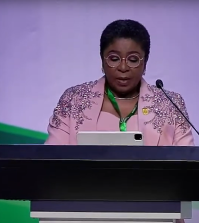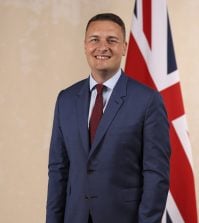White House pushes ahead with federal HR agency break-up

The White House is finalising its plans to break up the Office of Personnel Management (OPM), with the Washington Post reporting that an executive order is in the final stages of review. The dismantling of the OPM is likely to begin by the autumn, the paper reported, with an announcement from president Trump expected by the summer.
The administration is asking Congress for US$50m during the fiscal year 2020 to fund its reforms. And Congress will also need to approve the structural changes before the OPM’s duties can be distributed elsewhere: in an interview with the paper, deputy director for management at the Office of Management and Budget (OMB) and acting OPM head, Margaret Weichert, said the administration plans to ask lawmakers to introduce legislation in the coming weeks to allow the transfer of two of the OPM’s core functions, covering the employee retirement and health-care systems.
Only last month, President Trump announced his intention to nominate former Federal Labor Relations Authority (FLRA) chair Dale Cabaniss to lead the agency for the next four years. The White House has not yet explained what role Cabaniss would take up – if any – following the changes.
Union concerns
The plans have not changed a great deal since they were first proposed – and roundly condemned by civil service unions – in 2018. The department, which oversees employment conditions, healthcare, insurance and retirement benefits for 2.1 million employees across the US federal workforce, would be split up and the responsibilities moved to three other agencies.
The General Services Administration (GSA) would take over OPM’s human resources role; the Department of Defense (DOD) would become responsible for the agency’s background investigation operation; while the Office of Management and Budget (OMB) would take on high-level policies governing federal employees.
The move of OPM’s policy function to the OMB, which sits within the Executive Office of the President (EOP), proved particularly controversial when first announced in 2018. The idea of giving the White House tighter control of issues such as recruitment and promotion was especially worrying for unions representing civil servants. Speaking to Global Government Forum in 2018, Richard Loeb, senior policy counsel at the American Federation of Government Employees, described it as “a terrible idea, for so many reasons.”
“That would be the end, essentially, of the… notion of having an independent – or at least a semi-independent – office that is responsible for handling issues related to merit system principles,” he said.
The given reasons
Explaining the upcoming changes in an interview with The Daily Caller News Foundation on Thursday, Weichert said: “The mission of this agency is incredibly important and in the president’s management agenda there are three priorities for transforming government for the 21st century,” these being “IT modernisation, data accountability and transparency.
“In the 21st century, mobility, agility, the need to re-skill people to do the jobs of today, these are all things that are not able to be done by OPM because it’s dealing with this legacy infrastructure, a legacy funding model,” she continued. “That’s the primary reason strategically this is the marquee reorganisation that is needed.”
Weichert said there are no intentions to lay off any of the 5,565 staff. Employee numbers will instead be reduced through retirements and unfilled vacancies.
“Our goal isn’t specifically to reduce head count,” Weichert said. “But we do think there are a lot of efficiencies to be had.
“We have space utilisation opportunities that we think are important,” she continued. “At the end of the day our goal is to re-skill the employees we have, automate some of the lower value added components of their work so that they can actually do more with fewer people.”
A Global Government Forum feature published last year outlined the proposals for organisational change, and explored unions’ fears























